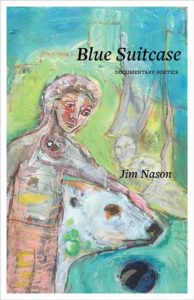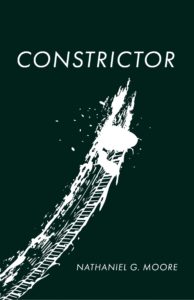W e are delighted to discover that John Sewell, the former Mayor of Toronto, author, journalist, and great urban thinker, recently reviewed Amy Lavender Harris’s Imagining Toronto in the pages of the journal Ontario History.
Imagining Toronto
by Amy Lavender Harris
Toronto: Mansfield Press, 2010. 333 pages.
$21.95 softcover. ISBN 987-1-894469-39-5There’s an array of names you can give the place: Muddy York, Toronto the Good, Toronto the dull and/or ugly, the most multicultural city on earth, the city of neighbourhoods, the most hated city in Canada. It’s a long list of possibilities, and as this book makes delightfully clear, for each term someone is conjuring up a way of looking at the place and making it real.
In fact the way we imagine Toronto probably is much more persuasive in realizing the city than any amount of park or concrete, big buildings or small, rich people or dispossessed. It is not so much that art is truer than real life but rather that it is capable of giving us the ability to grab on to some important aspect of the city. The merit of new works of art is that they give us new ways of seeing the city we live in, afresh.
And it is not until one begins to browse this fine book that the scope of ways to think about the Toronto becomes so vast. I counted well over 600 books that Harris refers to along the way, most of them fiction, but also some poetry and plays, and a few even claiming to be non-fictional although they too contained their share of imagining. Some, like books by Margaret Atwood, Michael Ondaatje, Anne Michaels, Raymond Souster and M.G. Vassanji, are well known. Many are not, and Harris’s great service is to give the lesser knowns a presence, and to open the door to their delights. Rabindranath Maharaj’s Homer in Flight has entered my must-read list, as has work by Zoe Whittall, Gwendolyn MacEwen (whom I knew about but hadn’t want to treat as seriously as Harris thinks I should), and Phyllis Young as a start.
Harris chooses themes and places and turns to authors to see what they say. The waterfront often is a place for suicide; the Toronto Islands for sexual endeavours, as sometimes is Kensington Market; ravines are places of violence; streetcars are generally welcoming to people (although subways can be a threat); Union Station is uplifting.
She recounts the extensive talk about neighbourhoods and how they define our lives and social status, from Hugh Garner’s Cabbagetown to Timothy Findlay’s Rosedale, Pat Capponi’s Parkdale and Katherine Govier’s Annex. Who knew that we had so many writers who had so many interesting things to say about every corner of the city. Harris delves into half a dozen novels about the homeless—a derelict ex-doctor, a disgraced ex-judge, and more—and concludes that “all of them are represented as gifted, if troubled, individuals whose moral qualities seem sharpened rather than dulled by the time each has spent on the street.”
Harris does a fine job on the literature of the mythic Spadina Avenue, and novels about life in the garment trade. Barbara Greenwood’s novel for young adults, Factory Girl, seems like a seminal place to start understanding the drive for unionization on the street, but there are a number of other works to choose from as well.
The fifteen pages discussing what writers have to say about multiculturalism are terrific. Too many authors, she says, try to describe the situation by listing all the different cultures or cultural festivals, but that technique falls short. “Even an anthology requires thematic coherence,” she writes, and she despairs that coherence isn’t achieved very often, although happily she cites Lawrence Hill’s delightful satire Any Known Blood with what I saw as approval. Mobashar Qureshi’s novel R.A.C.E. seems a promising read, as the police set up Operation Anti-RACE against a so-called criminal operation that boasts it does not discriminate among the various kinds of criminals involved.
Harris teaches urban identity and the cultural significance of place in the Geography department at York University and the book flowed from the lectures she has given. I admire the extraordinary amount of work required to make order of what she has read, but still had the sense that this book is a beginning, that there is much more to be done in fitting ideas about Toronto in writing, painting, and music into larger patterns. I suspect most of us think this kind of reckoning is a relatively new kind of way to look at the city, but Harris goes back to Morley Callaghan writing an essay in 1954, “How Can a Writer Live in Toronto?”
Callaghan writes “If you stay in Toronto, the longing [for experiences larger than life] remains deep in the soul, and since it can’t be satisfied you can’t be wearied, and your mind and your imagination, should become like a caged tiger. O Toronto! O my tiger city!”
Harris concludes, “coming to terms with Toronto, however we may experience or perceive it, is not only one of the city’s greatest challenges, but may well be one of its most meaningful opportunities.” This book is a great place to start. For my money, I would require any candidate for public office in Toronto to certify that he or she had read this book with care.
John Sewell
Former mayor of Toronto and author of nine books about cities and their politics, the most recent being Police in Canada, the real story.




























